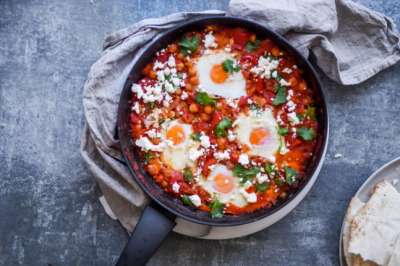Serve this vegetarian frittata at a family lunch, for a slow Saturday morning breakfast or easy mid-week dinner. It’s a guaranteed crowd-pleaser!
vegetarian
This Persian baked eggs dish is like comfort in a bowl. Dial up the spice with the addition of chilli, or it’s equally delicious without.
This pan-fried Persian rice dish has a crisp golden crust with soft fluffy rice inside. It’s a delicious side dish that pairs well with chicken or lamb.
This vegetarian lasagne recipe is the ultimate winter warmer, packed with nourishing veggies and gluten-free goodness the whole family will love.
These pasties are a beautiful and nourishing take on a traditional pastry filled with vegetables and herbs. Eat fresh out of the oven or freeze for later!
This is an easy recipe, perfect for sharing. Each toasted cheese pocket is filled with green veggies and cheese, a classic combination loved by all.
This vegetarian filo pie is a simple, wholesome and no doubt will be on your menu for a delicious meal with friends and family soon.
This lemon yoghurt cake is gluten-free and packed with plenty of naturally sweet, sticky flavours for a deliciously moreish afternoon tea treat!
Cheese lovers, look no further! These recipes, made with That’s Amore Cheese’s decadent burrata, are the ultimate dinner & dessert staples.
Herbalife Nutrition’s energy food shakes provide a balanced source of healthy nutrition packed with vitamins and minerals, protein and fibre.
This creamy, lush cauliflower soup is the ultimate warming, soul food. It’s perfect for vegetarian dinners and gluten-free too!
Simply combine your brown rice leftovers with simple vegetables and a little kick of caramelised onion and thyme to make this wholesome brunch bowl.
Subscribe
Subscribe to a newsletter to receive latest post and updates











